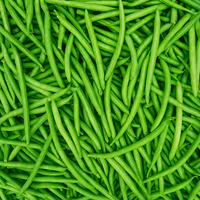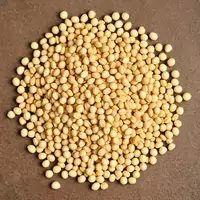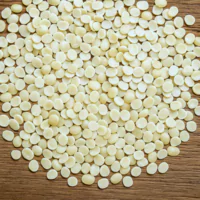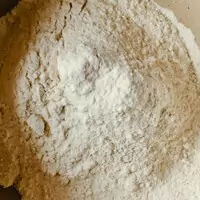Guar Gum
Introduction
The guar, or cluster bean, with the botanical name Cyamopsis tetragonoloba, is an annual legume and the source of guar gum. It is also known as gavar, gawar, or guvar bean. It’s the source of guar gum, a biopolymer extracted from the seeds of the plant. Guar is grown in warm regions as a vegetable, for forage, and for its seeds. It’s also a rain-fed crop that requires warm weather, moderate rainfall, and plenty of sunshine.
Guar is grown mainly in India, Pakistan, Sudan, and parts of the USA. India grows over 850,000 tons, or 80% of the total guar produced all over the world. Mainly in Rajasthan, 65% of the guar gum or derivatives produced in India are exported, mainly to the USA and to European countries. India is the world leader in guar production. Surprisingly, although guar primarily is grown for its gum content, very little was known about the variability of gum content in the seed of Cyamopsis tetragonolobus.
Process of Converting Guar to Guar Gum

Guar

Guar Seed

Guar Split

Guar Gum
Grades
Guar gum is available in various grades, depending on its purity, viscosity, and intended application. The primary grades include:
Food-Grade Guar Gum
Industrial-Grade Guar Gum
Modified Guar Gum
Technical-Grade Guar Gum
Pharmaceutical-Grade Guar Gum
Applications
Food Industry
Its unique properties make it particularly valuable in gluten-free baking, where it helps improve texture and structure. It can also extend food’s shelf life by preventing rapid thawing.
Pharmaceutical Sector
It has antimicrobial, appetite-suppressing, laxative (due to its high fiber content), antiproliferative, and hypolipidemic properties, so it is used in medication formulations. It is used as a disintegrating agent in the manufacturing of tablets.
Cosmetics and Personal Care
It is commonly used in shampoos, conditioners, and lotions due to its emollient, thickening, and conditioning properties. It is also used in cosmetic formulations to enhance consistency and texture.
Oil & Gas Industry
Guar gum is a natural polysaccharide extensively used commercially in the oil and gas industry in recent decades. It adds viscous and friction reduction properties to fracturing fluids, enabling deeper penetration into the reservoir and wider fracture propagation, thus helping produce more oil and gas.
Textile and Paper Industries
Guar gum uses include acting as a thickening agent in dye solutions for fabric printing in the textile industry. It is also a sizing agent that improves fabric strength and texture during weaving. Similarly, in paper manufacturing, it helps create a dense surface for printing, leading to better-quality sheets.
Pet Food Industry
Guar gum additives effectively preserve pet food freshness and structural integrity until consumption. Moreover, this ingredient has been known to contribute to improved cholesterol and amino acid levels in pets.
